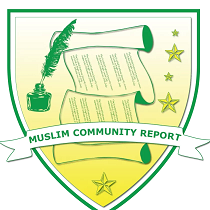NYCHA issues eviction notices to unpaid rent tenants amidst financial struggles
In light of a substantial $500 million rental payment deficit, the New York City Housing Authority (NYCHA) has escalated efforts to compel tenants who have defaulted on their payments to fulfill their financial obligations, resulting in the issuance of numerous eviction notices over the past weeks.
According to reports, following the COVID-induced rent payment hiatus that persisted even after the eviction moratorium ended in January 2022, NYCHA’s predicament has been exacerbated by a mounting sum of unpaid rent from households within the public housing sector.
It was reported that “At the close of June, a staggering 70,000 out of 151,000 public housing units were in arrears, aggregating an unprecedented outstanding sum of $509 million.”
This contrasts starkly with the pre-pandemic backlog of approximately $129 million.
The alarming decline in NYCHA’s rent collection rate, which plummeted to around 63% since 2019, compared to a pre-pandemic annual average collection rate of 95%, has necessitated stringent measures.
The authority has intensified the issuance of eviction notices to households significantly behind in their payments, with 1,250 households receiving such notices by June 30.
Although only 15 households have been evicted thus far, numerous eviction proceedings are currently undergoing adjudication in Housing Court, with a substantial increase in cases expected to ensue.
The imperative to collect all owed rent, imposed by the U.S. Department of Housing and Urban Development (HUD), which disburses the majority of funding to NYCHA and other public housing agencies, underscores the urgency of the situation.
NYCHA is legally obligated to recover the outstanding debts, rendering writing off the arrears unfeasible.
The trajectory of the arrears has been consistently upward, growing from $350 million when the eviction moratorium concluded in January 2022, to $450 million in December, and culminating at the current figure of $509 million.
The looming issue is compounded by the sheer magnitude of the debts incurred by tenants who did not make any payments during the 21-month moratorium period, potentially resulting in an arrears exceeding $7,200 per household.
The mounting debt raises concerns about the feasibility of repayment for tenants faced with such substantial financial burdens.
NYCHA’s approach has thus far been selective, primarily targeting households with the highest outstanding amounts that did not avail pandemic-related rental reimbursements offered by the state’s Emergency Rental Assistance Program (ERAP). Furthermore, eviction proceedings are prioritized for tenants involved in unlawful activities on NYCHA premises or who have threatened or committed violence against staff or fellow tenants.
While NYCHA spokesperson Michael Horgan emphasizes that “eviction is pursued as a last resort,” legal experts contend that “the issue is rooted in the differential treatment of public housing tenants during the pandemic.”
Unlike private renters who received federal support through ERAP, NYCHA tenants were excluded from receiving reimbursements until all eligible private sector tenants were compensated.
Efforts to address this crisis continue, with NYCHA pressing both state and federal authorities to alleviate the financial burden. Despite NYCHA’s attempts to steer 33,000 households towards applying for ERAP funds, the distribution of federal assistance was ultimately confined to private sector tenants. In a recent deal struck with Governor Kathy Hochul, the state allocated $164 million, a fraction of the current rent arrears, for households that applied for ERAP relief.
This financial quandary poses a significant threat to NYCHA’s operations, as rental revenue constitutes roughly one-third of the organization’s operational budget.
Consequently, the wellbeing of the tenants residing in NYCHA’s aging properties is at stake, prompting a call for comprehensive intervention from government officials at all levels.
The imperative to address rent arrears for public housing residents is echoed by advocates and experts alike, who emphasize the need to ensure the continued habitation and stability of affected communities.

